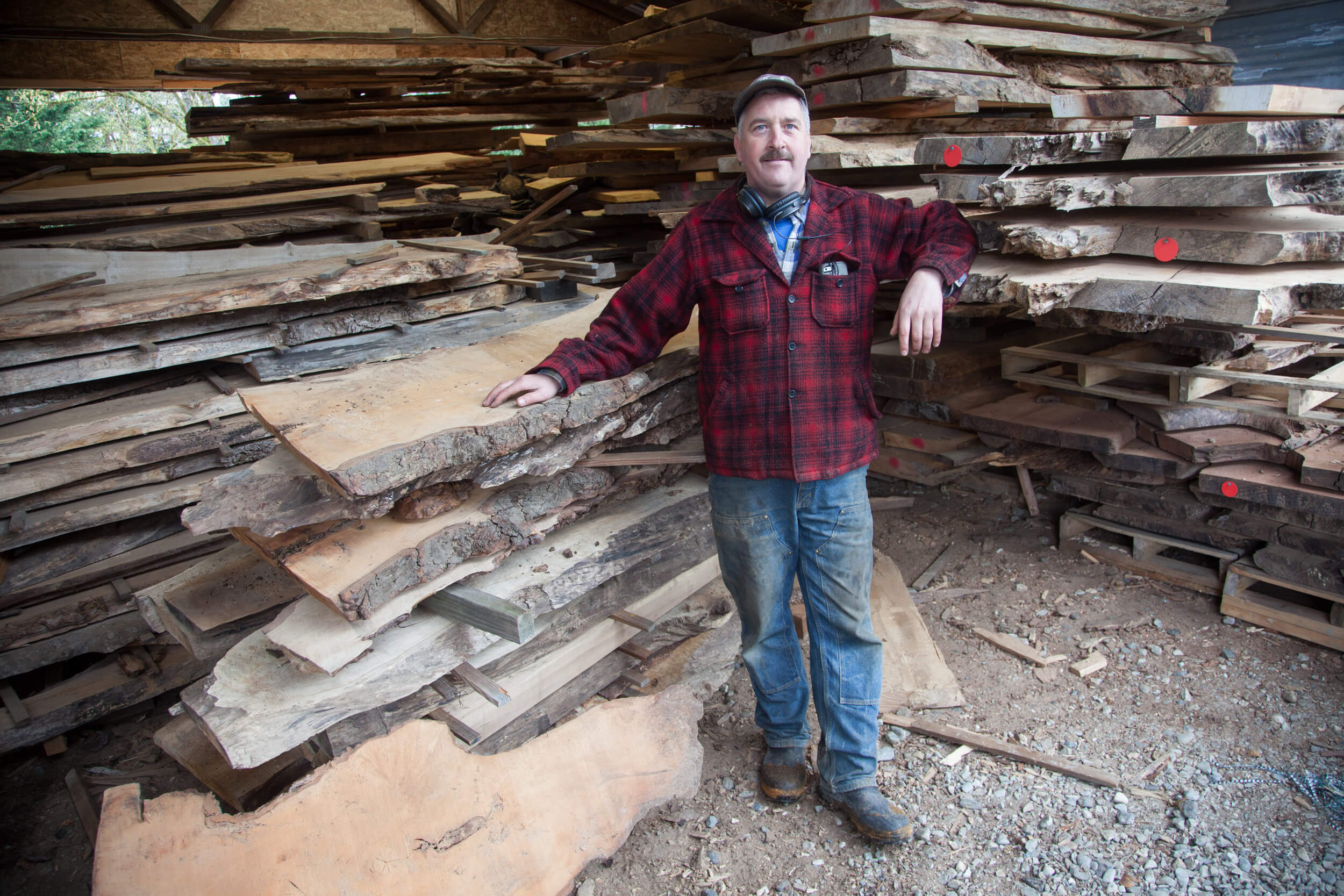
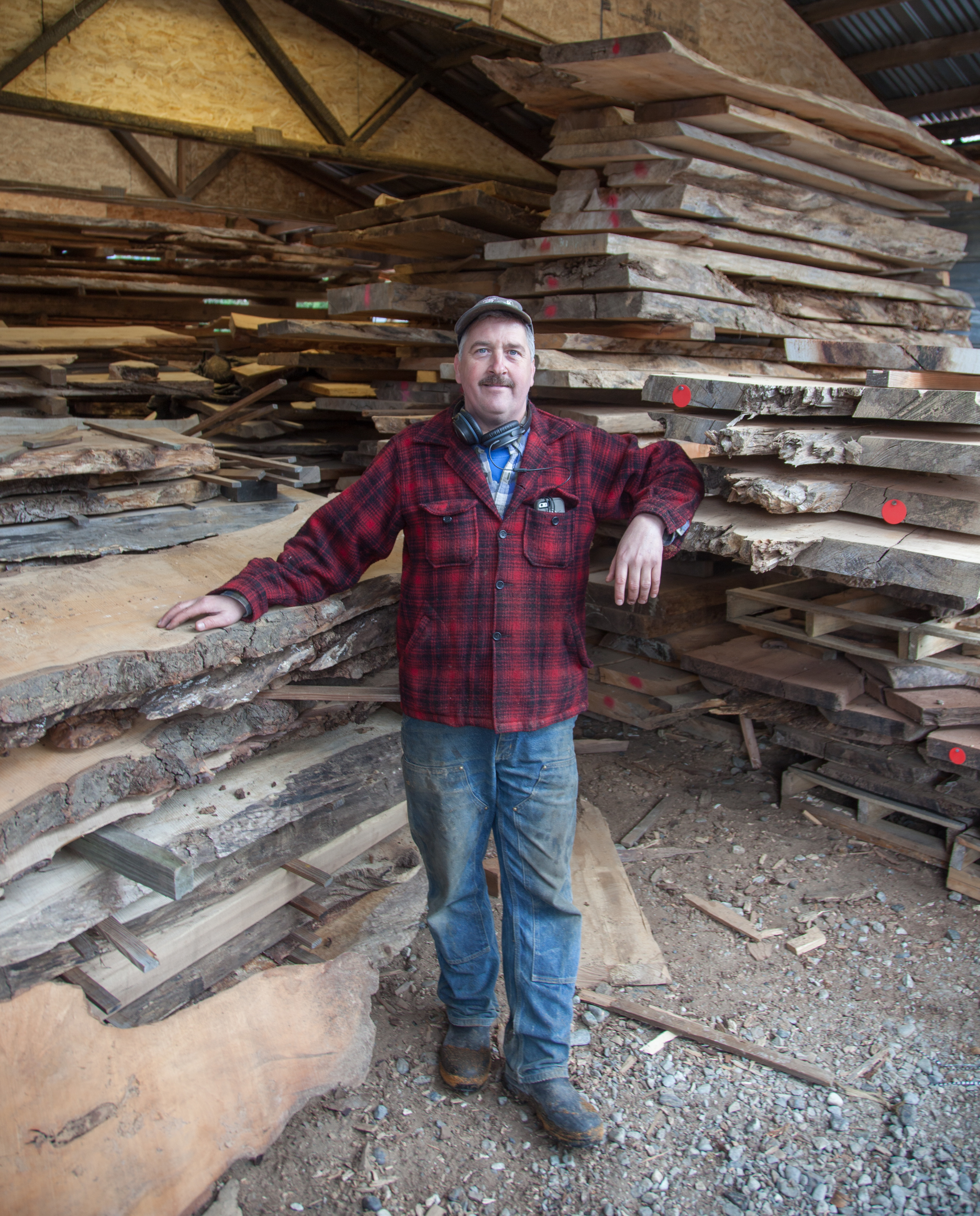 Bruce Blacker, Owner of Wild Edge Woods.
Bruce Blacker, Owner of Wild Edge Woods.
Meet Bruce Blacker, the owner of Wild Edge Woods in the small town of Oso in northern Washington. Bruce’s mill specializes in large reclaimed timber and produces live-edged slabs and other lumber imbued with organic character. Bruce embraces knots, burls, natural staining, and cracks in the slabs he cuts, believing they add valuable personality to the final product. What many may see as defects, Bruce beholds as beauty.
Nelson Treehouse and Supply has sourced wood from Bruce’s mill for over 15 years – it all started with Pete purchasing cedar shingles from Bruce’s father. One day, Pete spied Bruce’s enviable collection of reclaimed timber from across the street and, according to Bruce, “he started climbing all over the wood, turning it over, checking it out.” Pete and Bruce formed a fast friendship – since then, Nelson Treehouse and Supply has incorporated wood from Bruce’s mill in treehouses across the country. Pete also helped build Bruce and his parents a treehouse near the mill in exchange for lumber. Bruce’s parents still spend every summer in the treehouse, fishing from the deck into the river below.
We visited Bruce in Oso to uncover the story behind Wild Edge Woods. How is Bruce’s mill like a museum? Why does Bruce prefer to work with wood peppered by nails and pierced with chains? And what role does Wild Edge Woods play in the community? Read on and watch our video below to find out the answers to these questions…
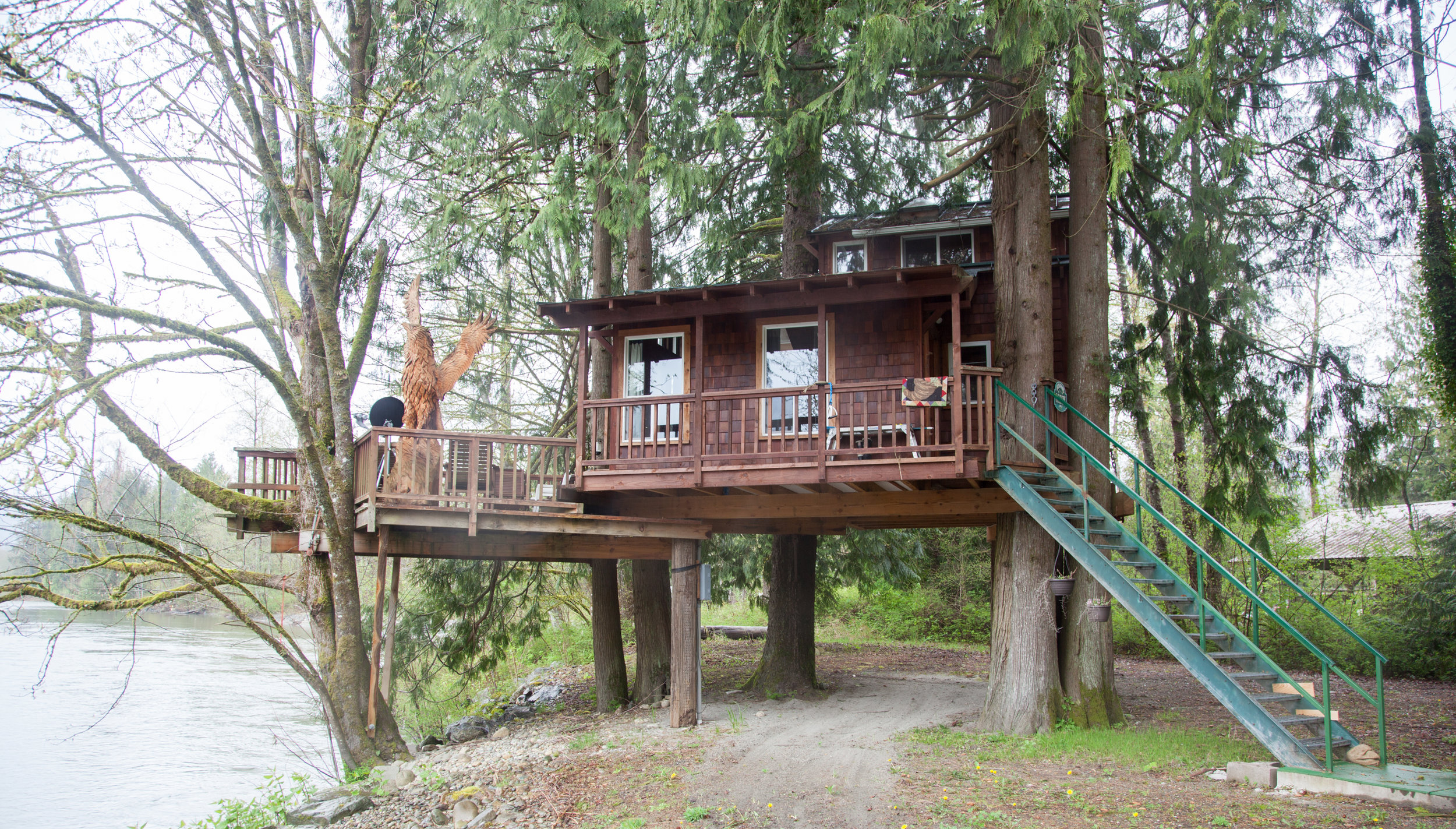 Bruce’s Treehouse.
Bruce’s Treehouse.
data-animation-override>
“I like trees with character: trees that have had treehouses in them, nails, stained, colored. Those are the ones no one else wants but I do. They have character and age – some are 60, 70, 80 years old. They have a story to tell.”
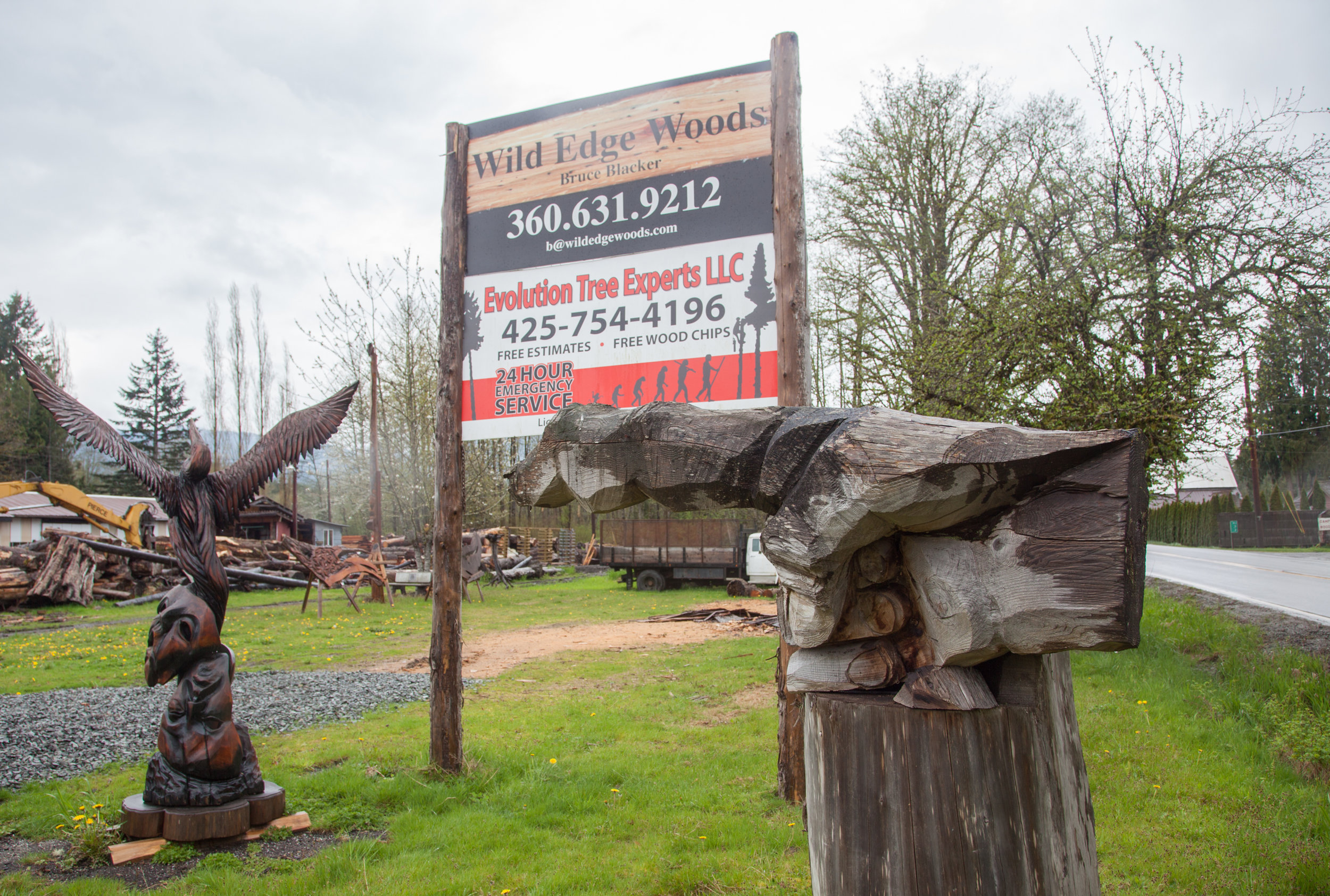
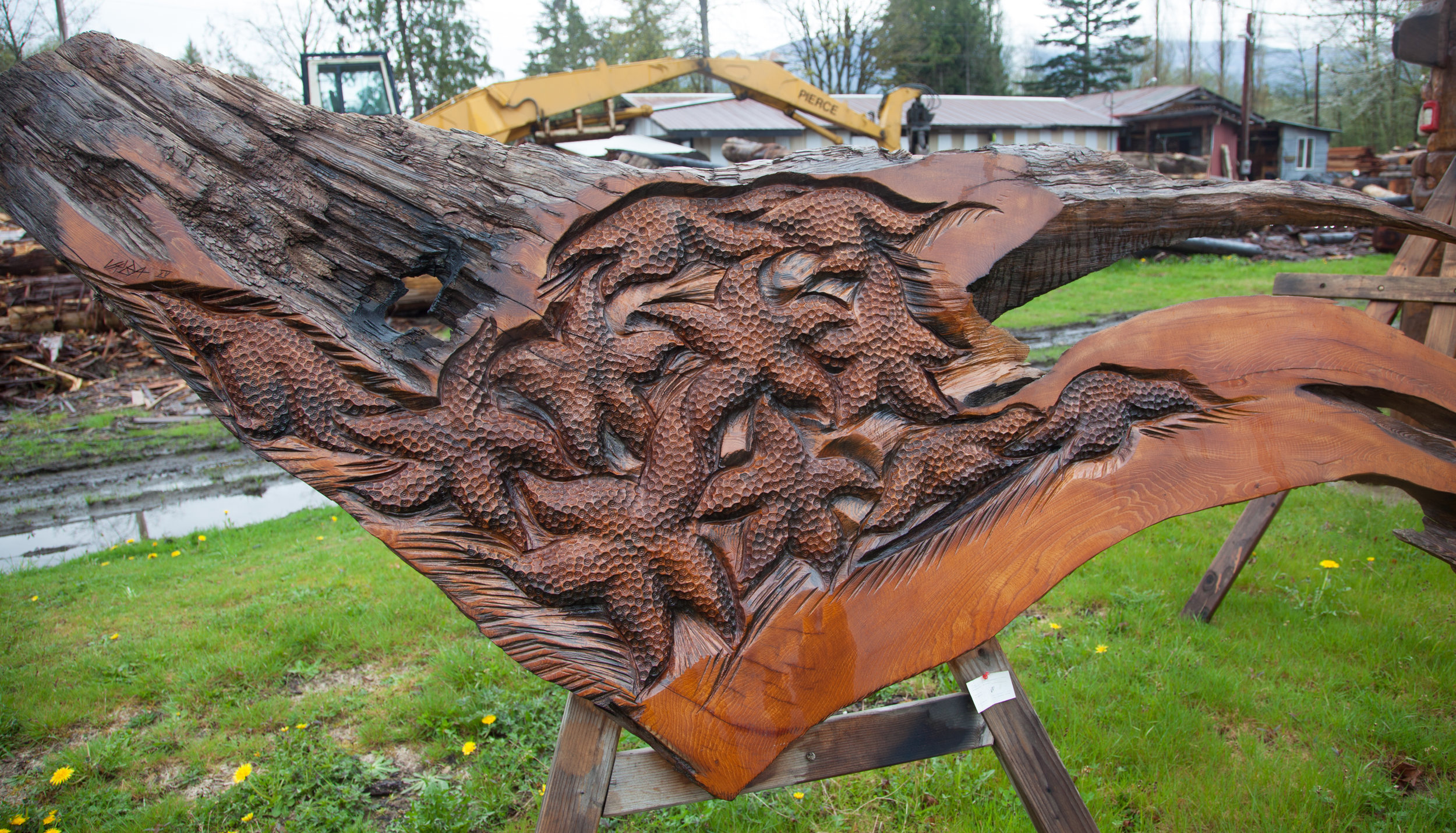
Walking into Wild Edge Woods, it’s clear that this place is something special. A cluster of wooden sculptures lies near the entryway: a carved hand, pointing to the mill; a bird with outstretched wings; a relief of starfish. These pieces, Bruce explains, are artifacts from the annual chainsaw carving contest he hosts at the mill. Past the sculptures are logs: lots and lots of prodigious logs, many with diameters that stretch four or five feet. Bruce carefully selects each of the reclaimed logs he brings to the mill, prioritizing wood with wild histories. He points to a stack of beefy oak logs, saying, “These come from a mental hospital in eastern Washington. In the early 1900s, the hospital had a tradition where each year a doctor was chosen to plant a tree. A windstorm hit these trees recently and I couldn’t resist them. I know which logs were planted by which doctors; I know their names.” With historic logs like these and Bruce’s knack for uncovering their stories, the mill is like museum of wood that tells a patchwork history of the Pacific Northwest.
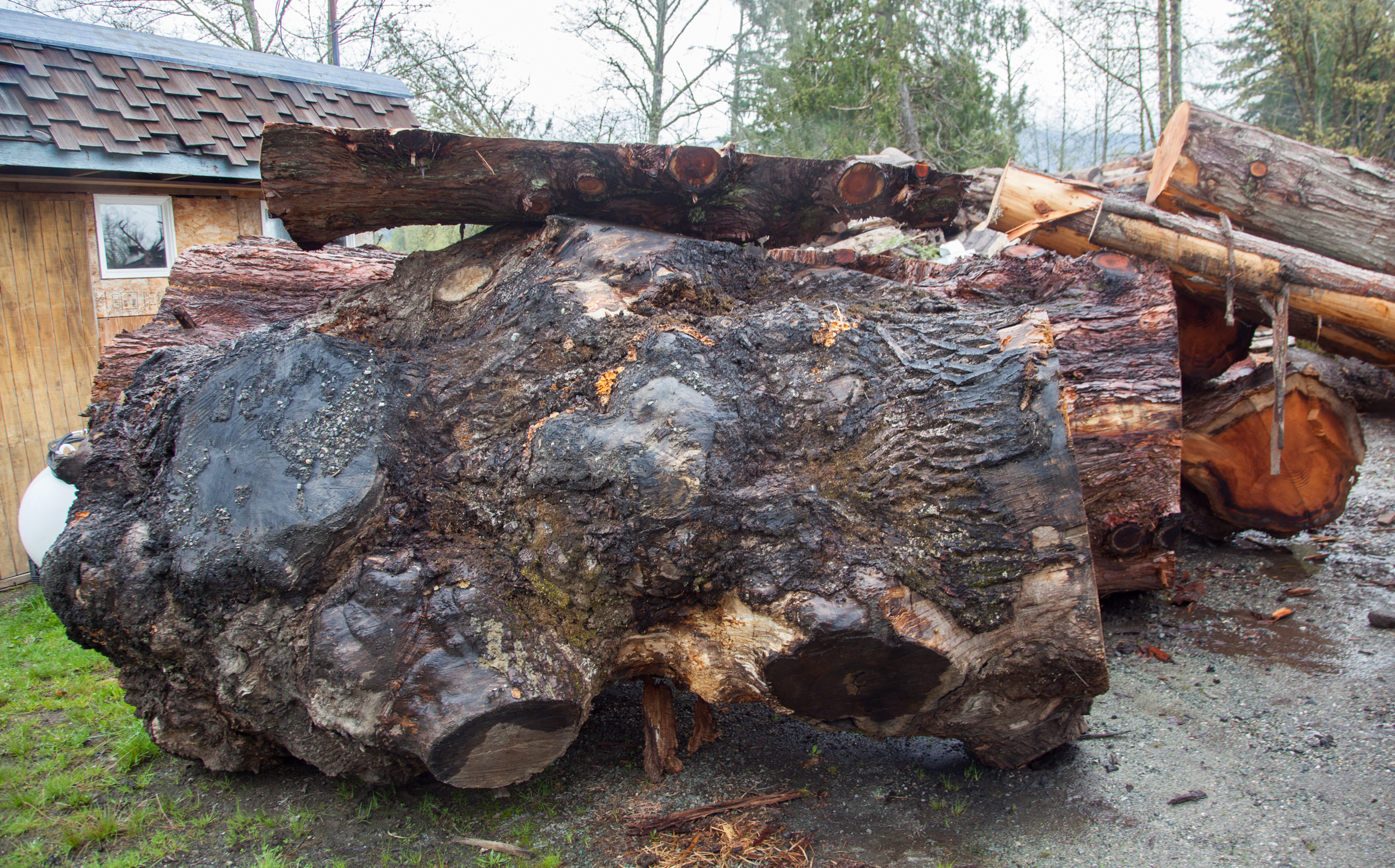
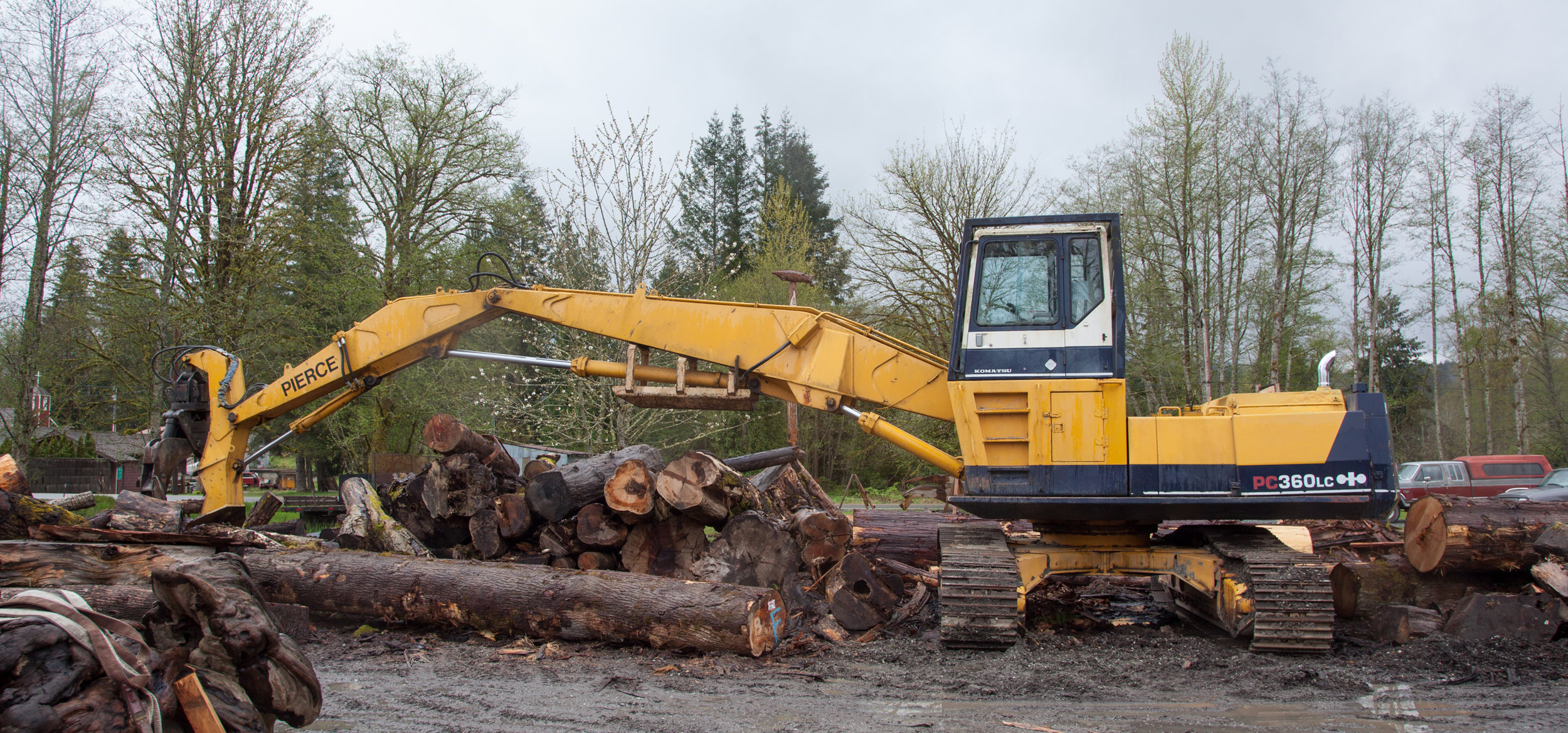
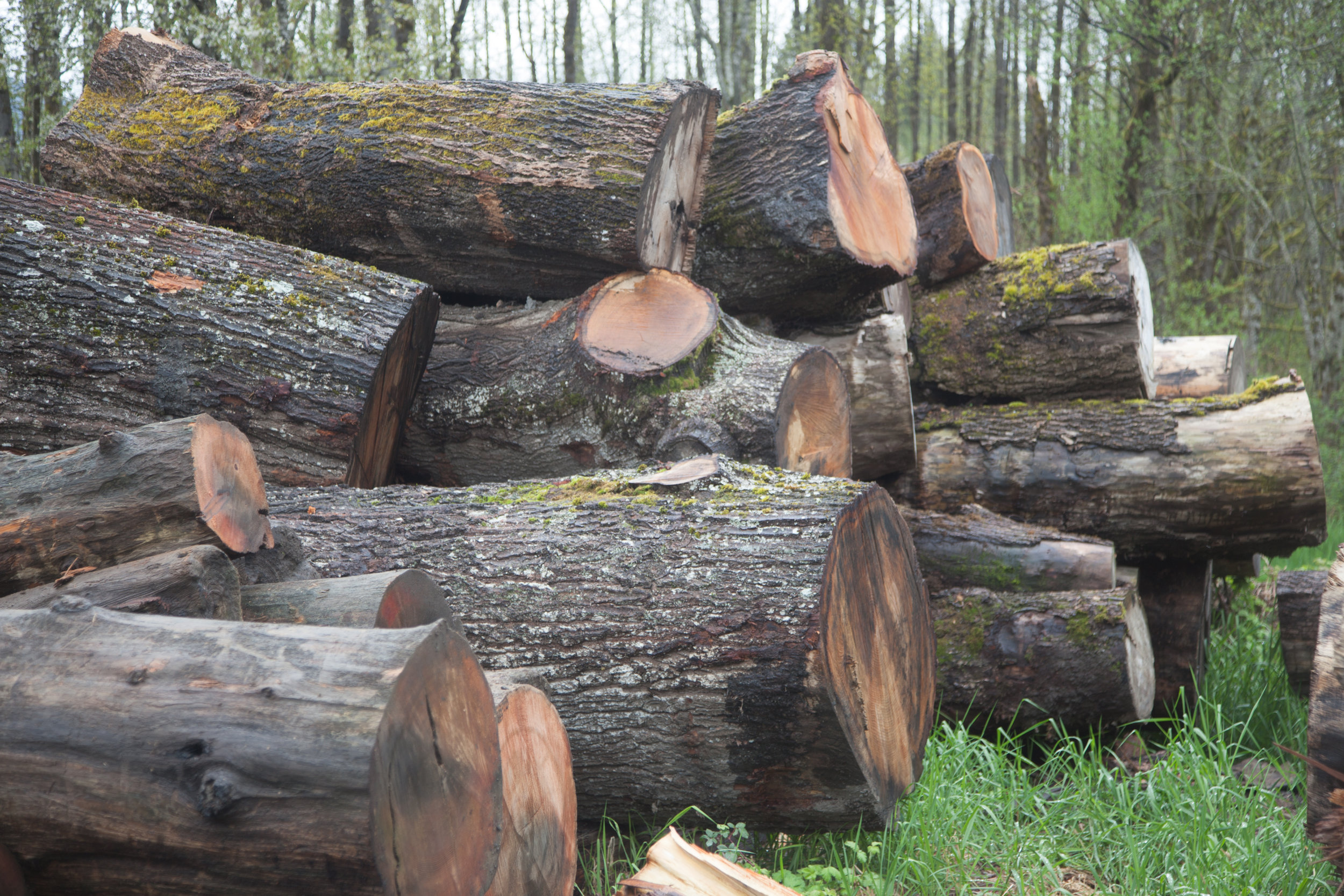 Logs from a. hospital in eastern Washington.
Logs from a. hospital in eastern Washington.
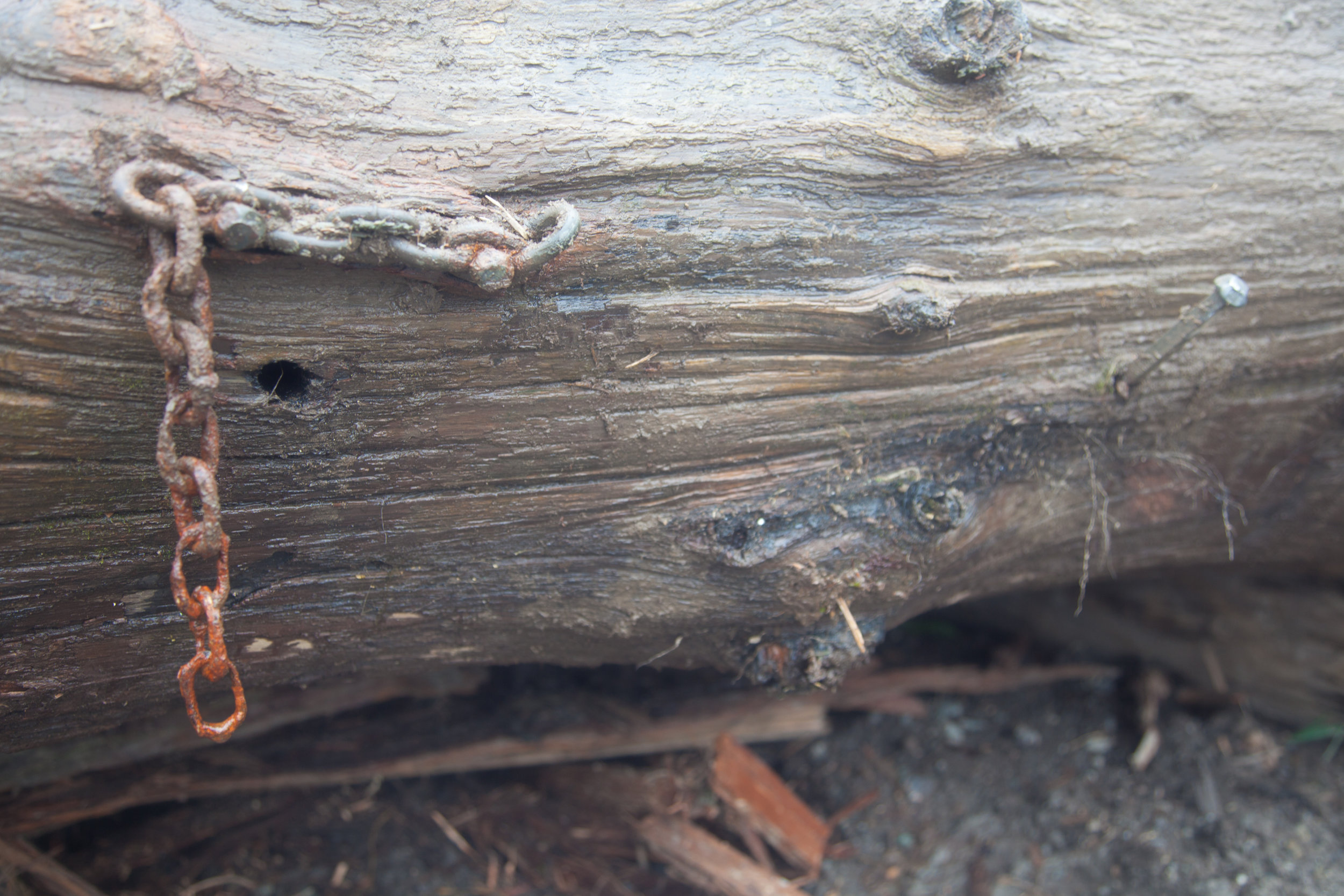
The week we visit the mill, Bruce is preparing to cut logs that once supported float houses on Lake Washington. Thick metal chains protrude from their flanks, but this doesn’t faze Bruce – the more gnarled the wood, the better. “I like trees with character,” says Bruce, “trees that have had treehouses in them, nails, stained, colored. Those are the ones no one else wants but I do. They have character and age – some are 60, 70, 80 years old. They have a story to tell.”
Clients will often enter Wild Edge Woods with a Pinterest-primed image of what they want: a perfectly square slab, free of any imperfections. By the end of their meeting with Bruce, the same clients will have an entirely different idea of beauty – Bruce will have convinced them of the value of slabs with organic edges and imperfect grains. These “flaws” give character to clients’ countertops, connecting them with rich histories and a rooted sense of place.
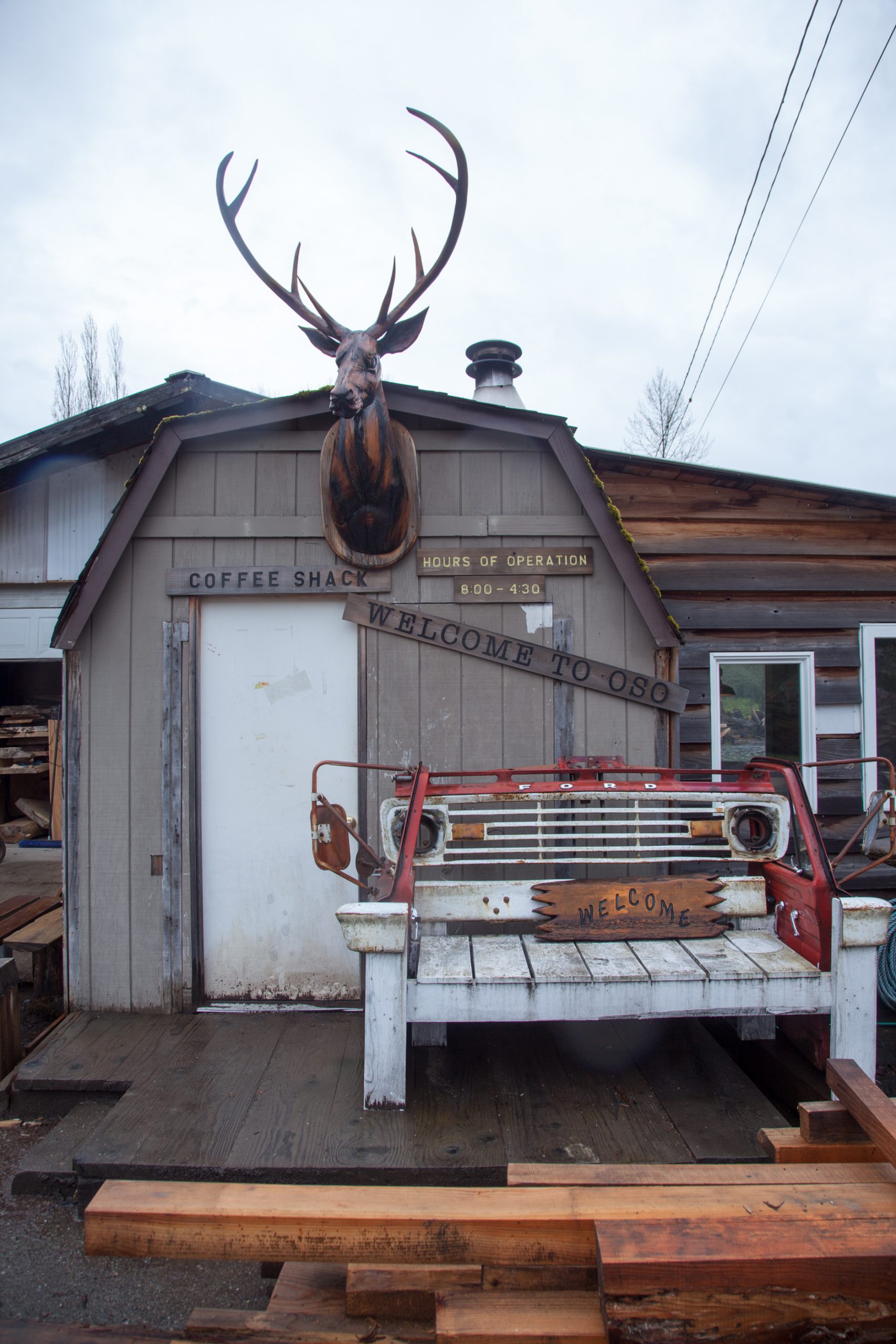
But Bruce’s mill is more than a source for stunning slabs, and more than an unconventional museum. At its core, Bruce’s mill is a gathering place for the community. Every morning, friends coalesce for coffee and cribbage in the mill’s tiny break room before departing for, in Bruce’s words, “their regular jobs.” The communal quality of Wild Edge Woods speaks to Bruce’s deep generosity, camaraderie, and dedication to his town. When a catastrophic landslide struck Oso in 2014, Bruce immediately jumped to action, helping with efforts to rescue victims and recover from the disaster. The landslide claimed 43 lives, among them Bruce’s friend Jerry (a photo of Jerry now hangs from the wall of the mill break room). Bruce says the community remains fundamentally shaken from the tragedy, but has grown even stronger and more tight-knit in its aftermath.
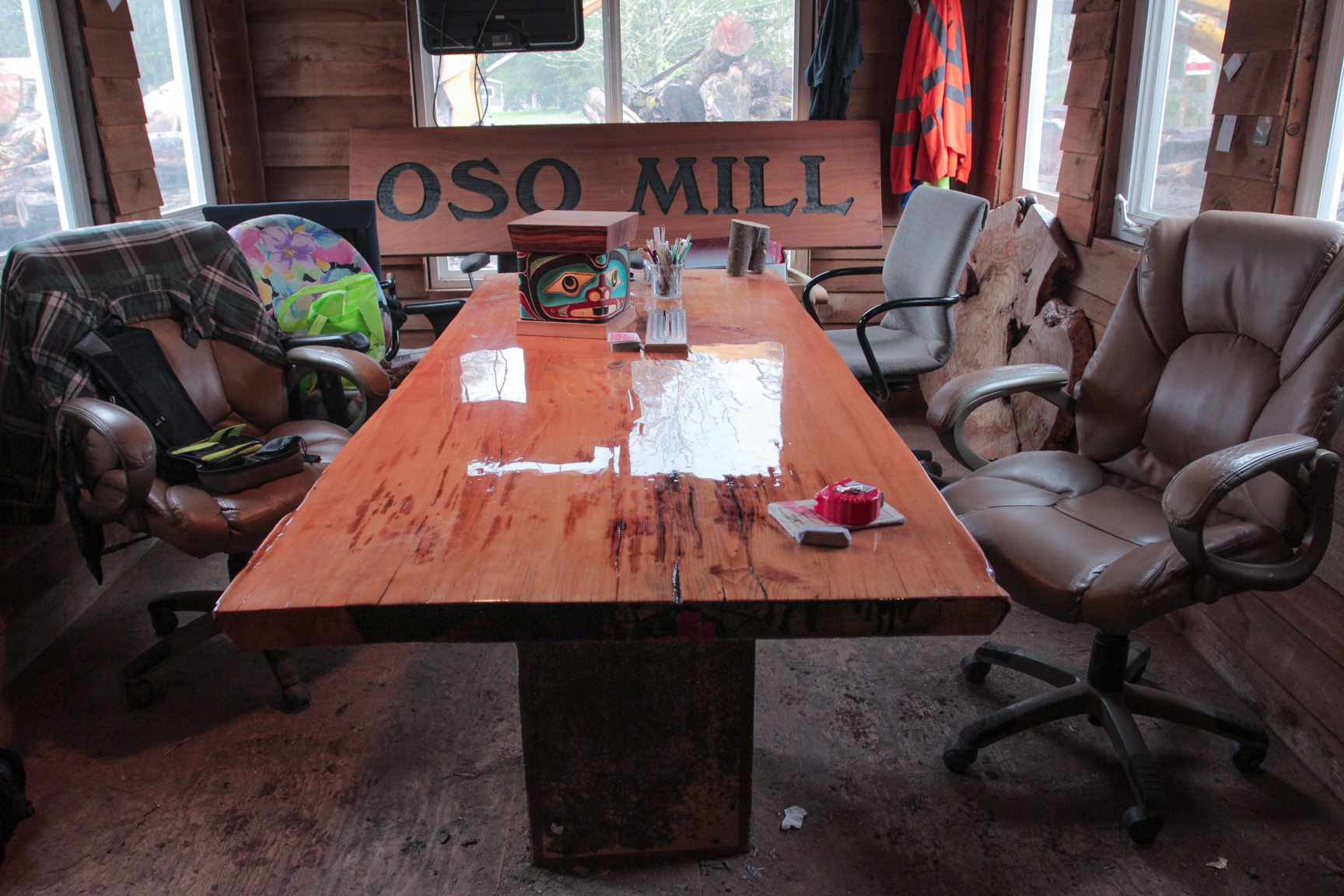
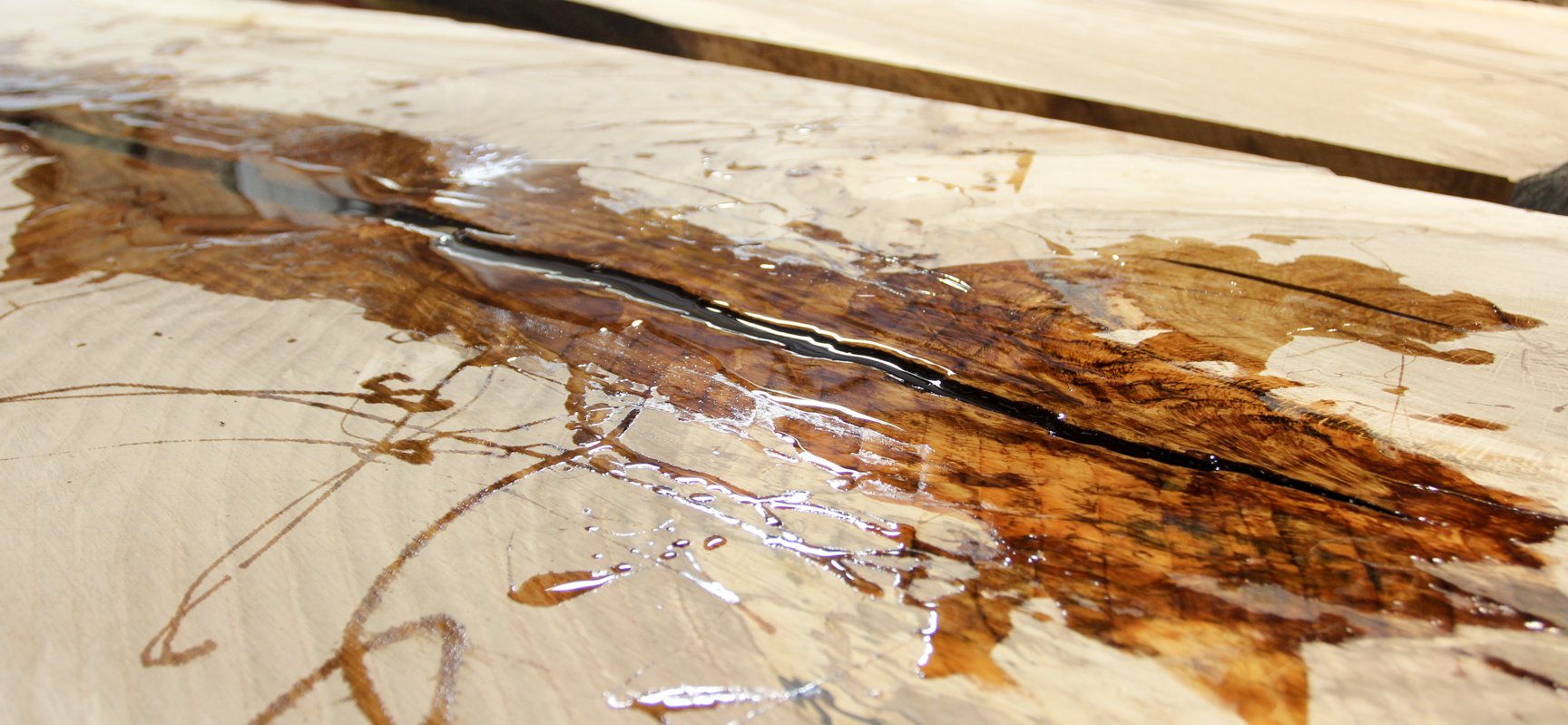
Bruce’s mill is a testament to the strength of the community, both in its resiliency (small, family-owned mills like Bruce’s are an endangered species across the US) and in its ability to bring folks together. But it should come as no surprise that Bruce is at the center of Oso’s restoration and recovery – in his community and work, Bruce is fundamentally a restorer. He conserves what many would discard and proudly showcases precisely what others view as most damaged. Bruce and his team lovingly fill jagged cracks with epoxy, tenderly pull iron stakes from the sides of 70-year-old logs, and celebrate a cut that reveals a patch of burly knots. Bruce inspires others to see the beauty and vitality in wood (and a community) that has been inflicted with heavy hardships.
Read on for photos of Bruce’s milling process.
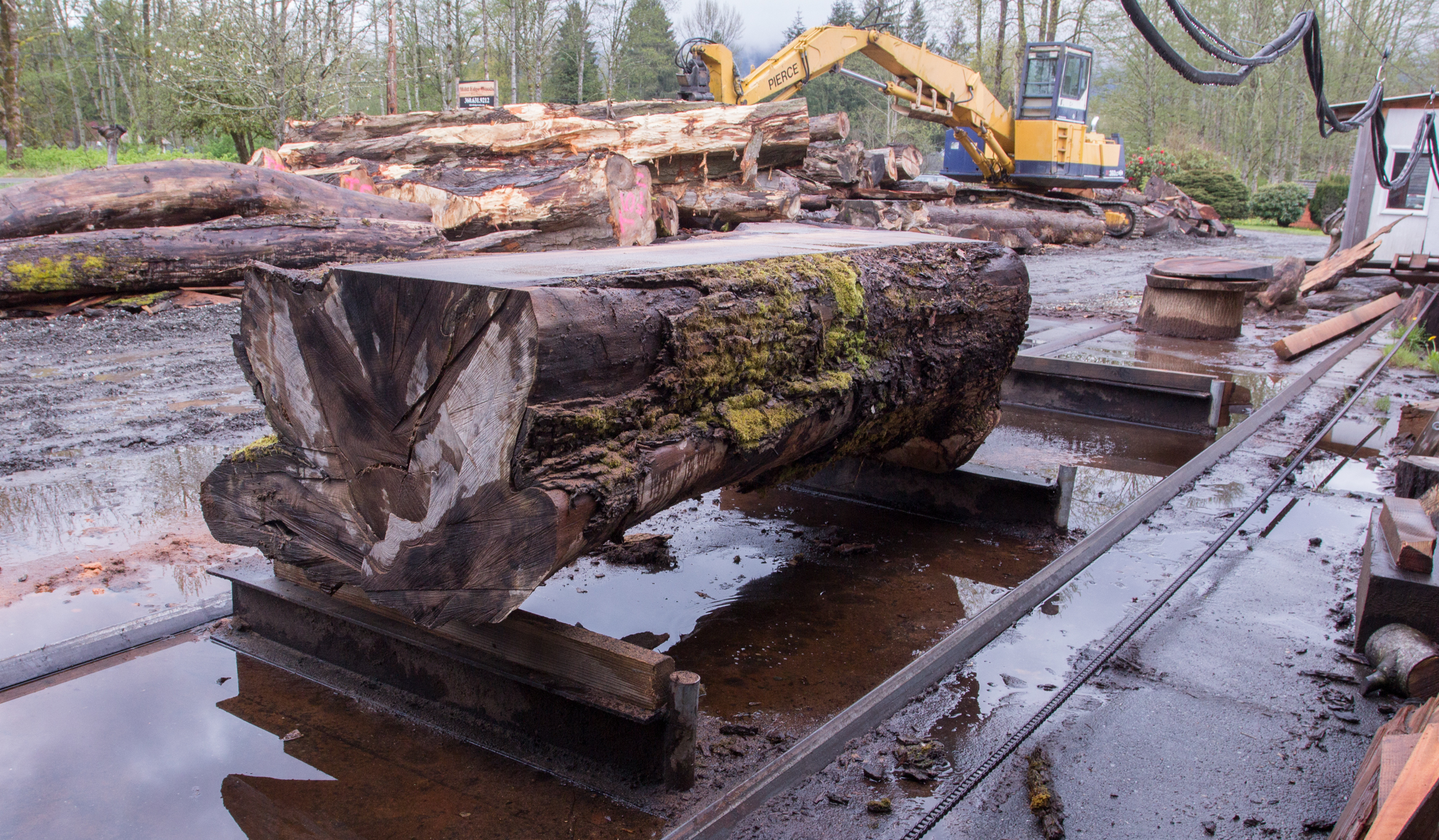
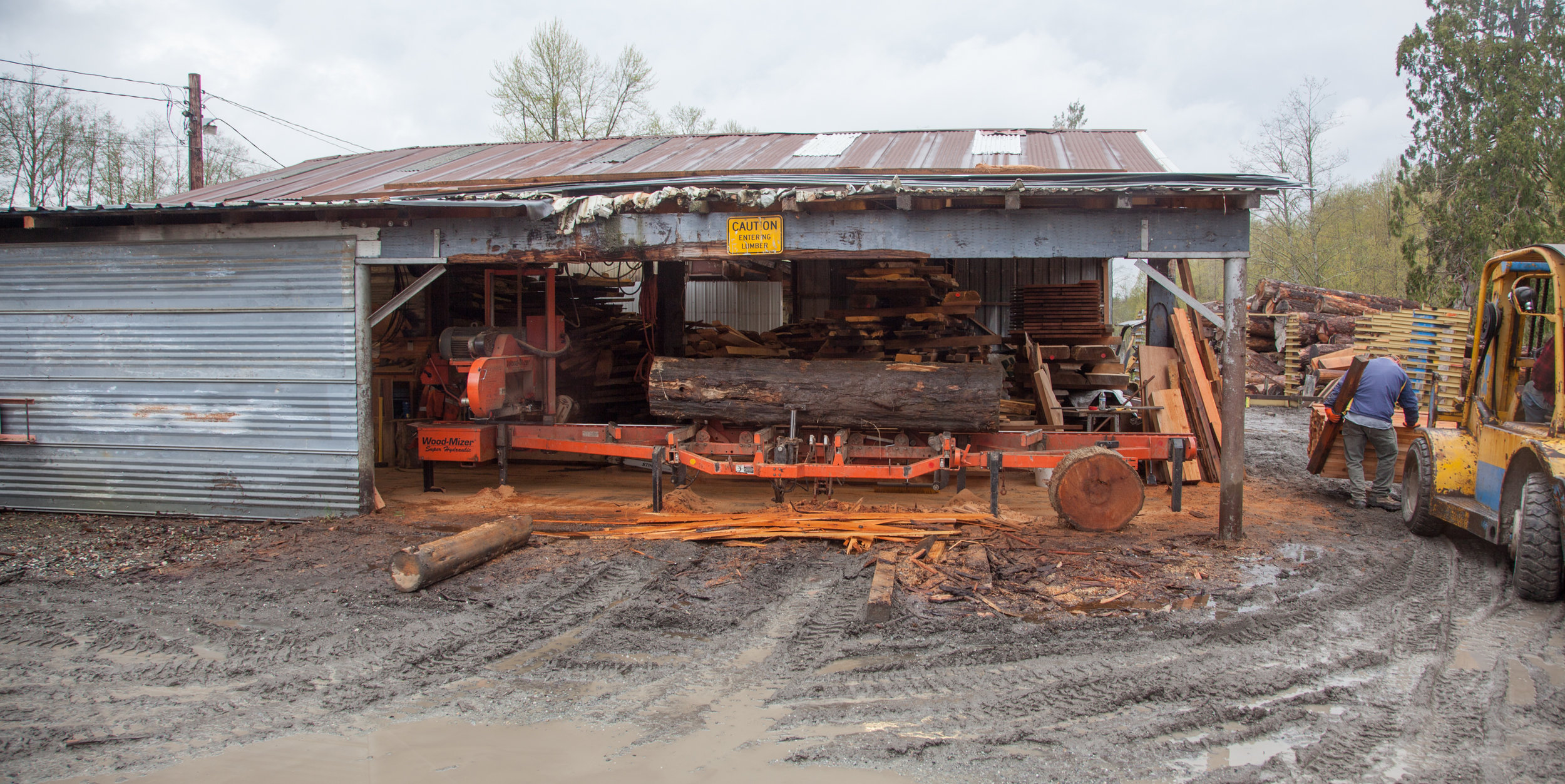 After bruce obtains reclaimed logs, he cuts slabs from them on his saw.
After bruce obtains reclaimed logs, he cuts slabs from them on his saw.
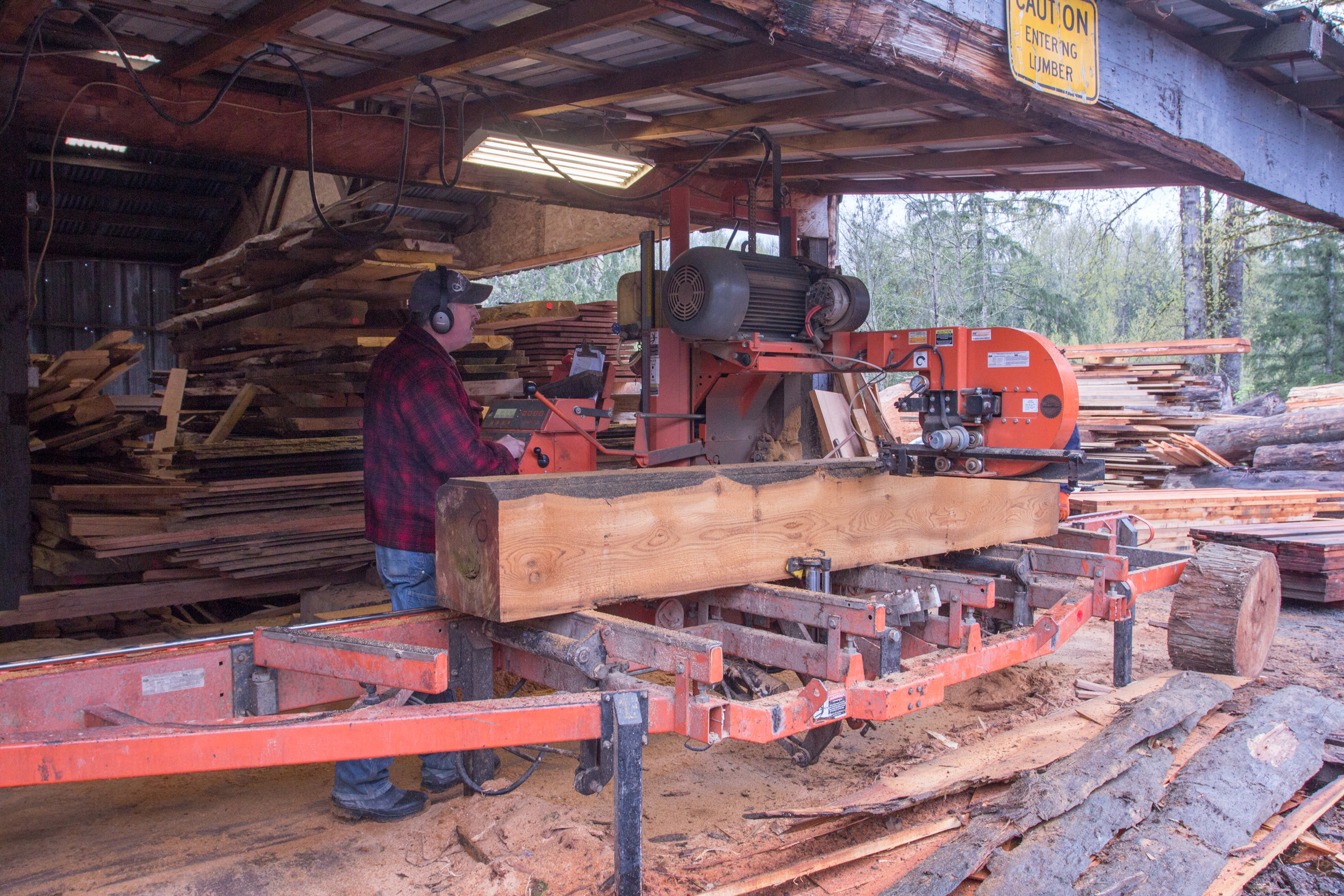 Cutting on the saw.
Cutting on the saw.
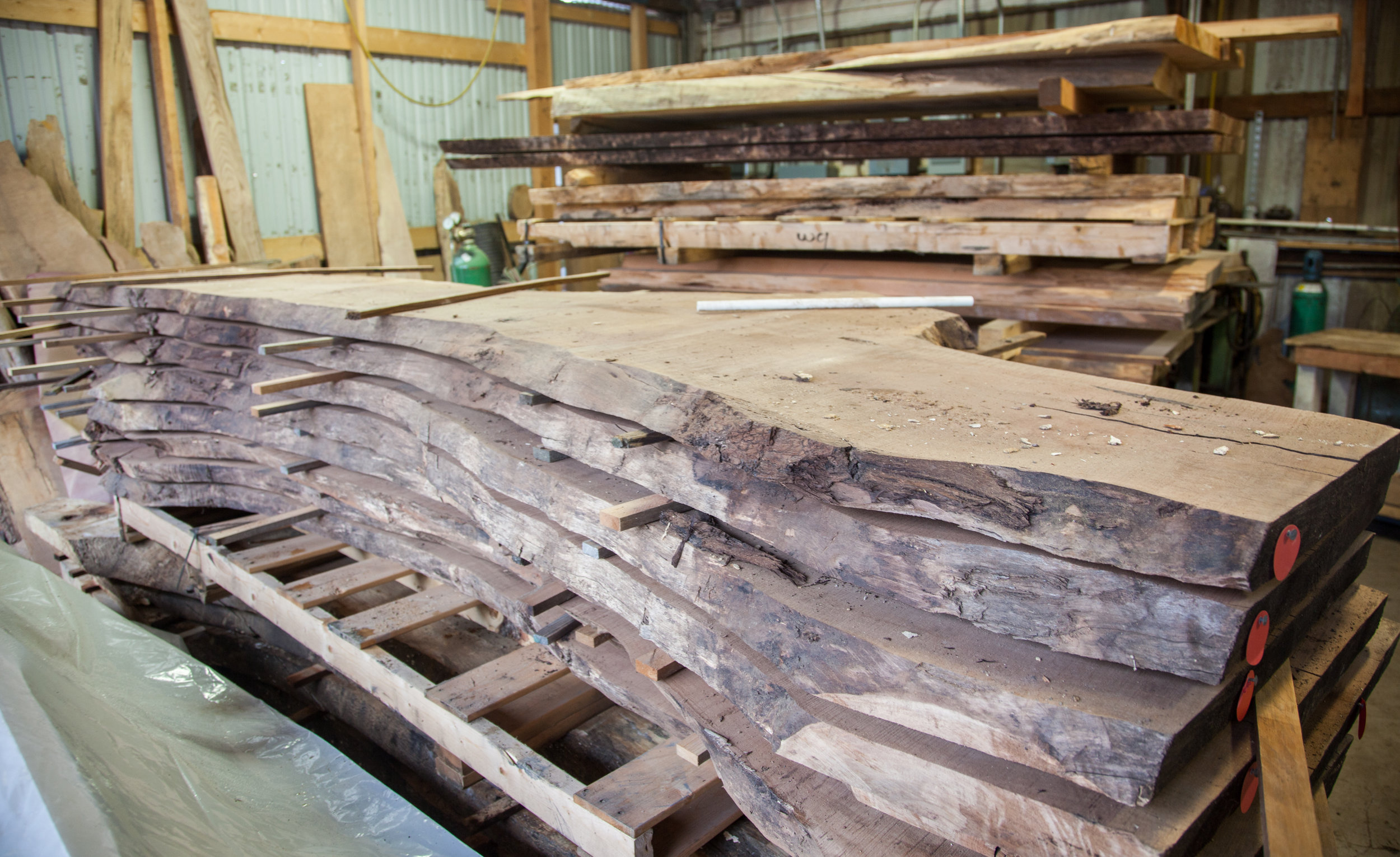 Cut slabs are then transferred to an offsite facility for kiln drying. After drying, Slabs return to Wild Edge Woods for sanding.
Cut slabs are then transferred to an offsite facility for kiln drying. After drying, Slabs return to Wild Edge Woods for sanding.
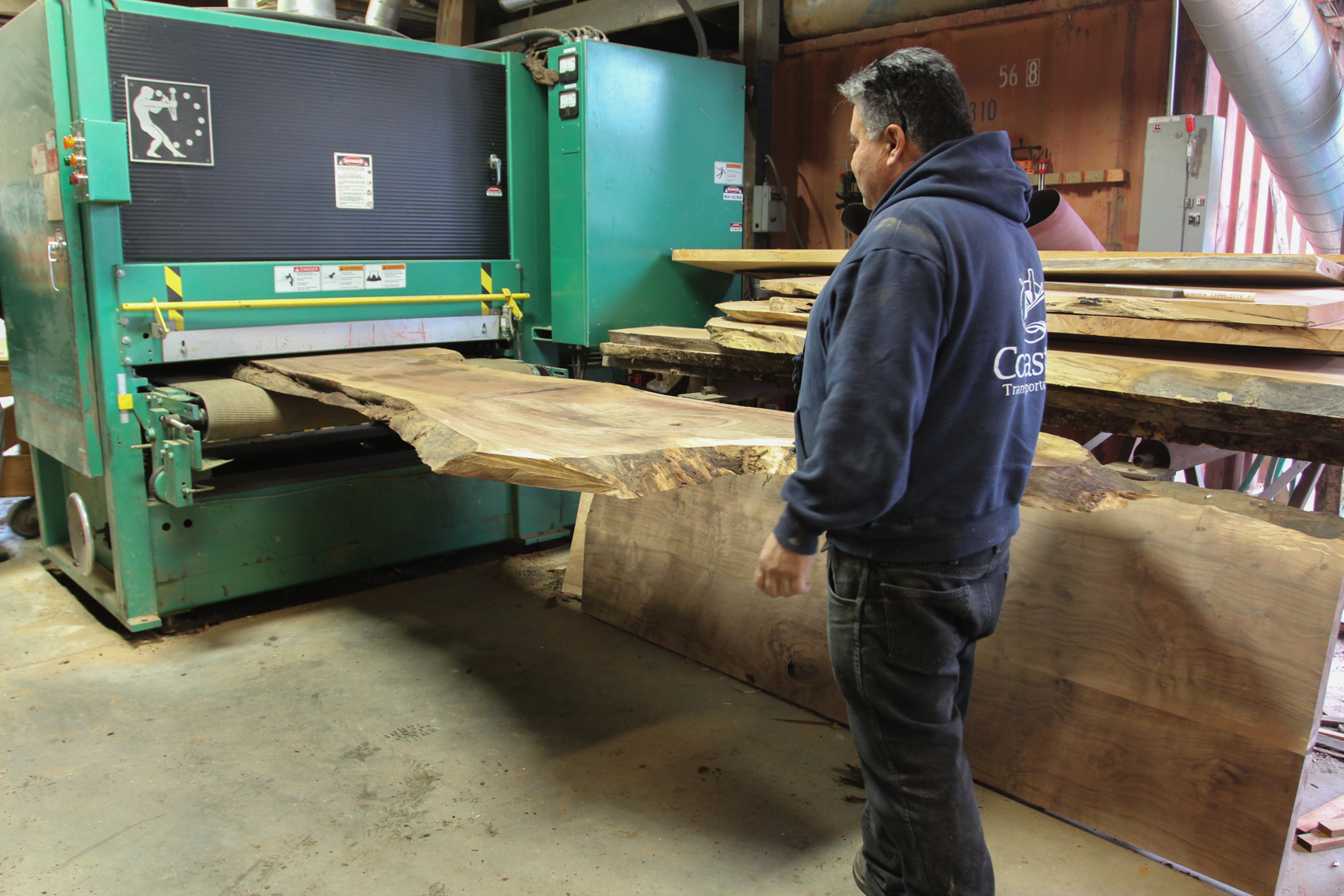 Ron Carlson, Sales partner at Wild Edge Woods and Owner of Eaglehawk Enterprise , puts a slab through the sander.
Ron Carlson, Sales partner at Wild Edge Woods and Owner of Eaglehawk Enterprise , puts a slab through the sander.
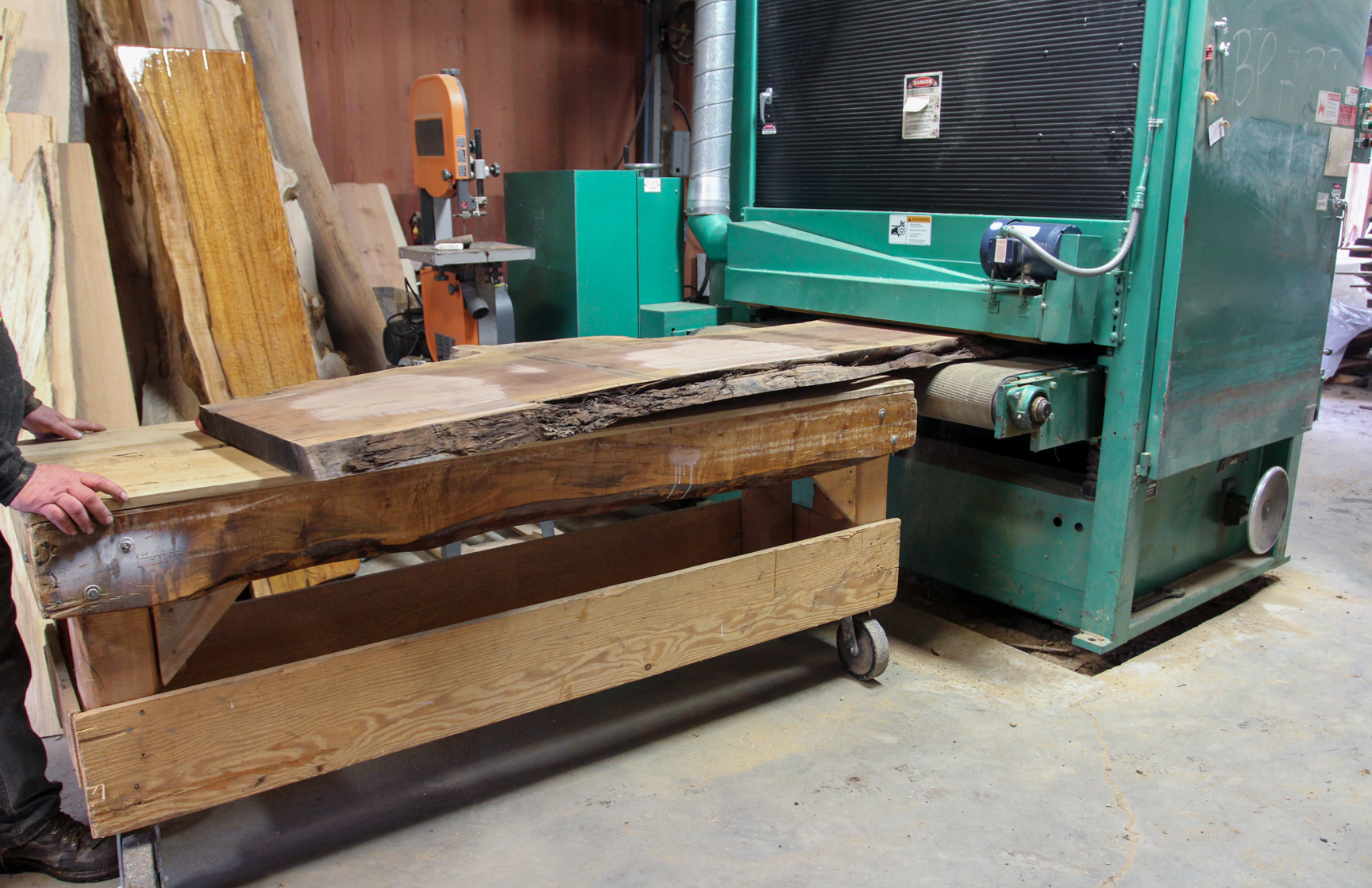 Bruce and his team will often patch cracks with epoxy once the slabs are sanded. Slabs are then ready for sale and finishing at home.
Bruce and his team will often patch cracks with epoxy once the slabs are sanded. Slabs are then ready for sale and finishing at home.
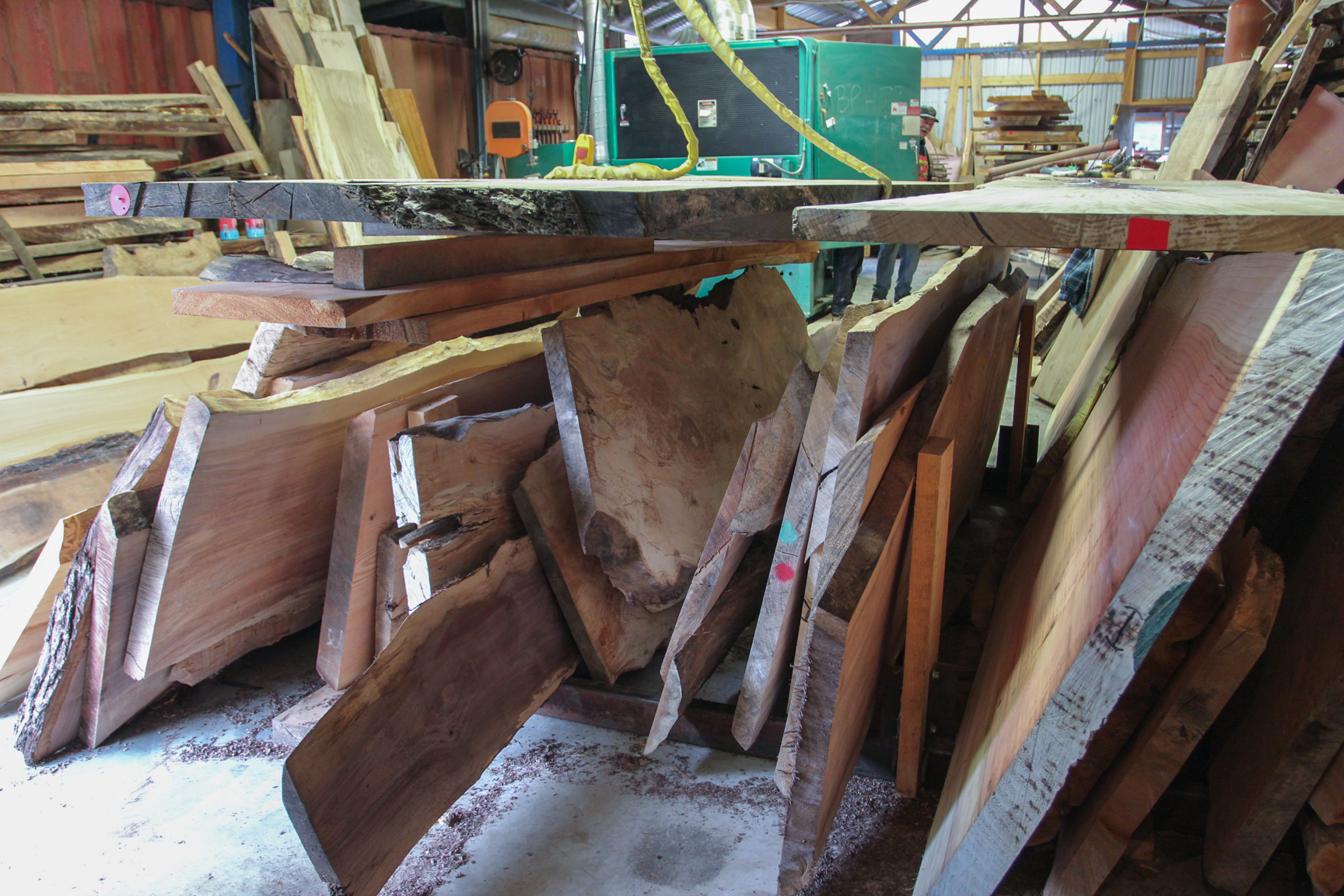
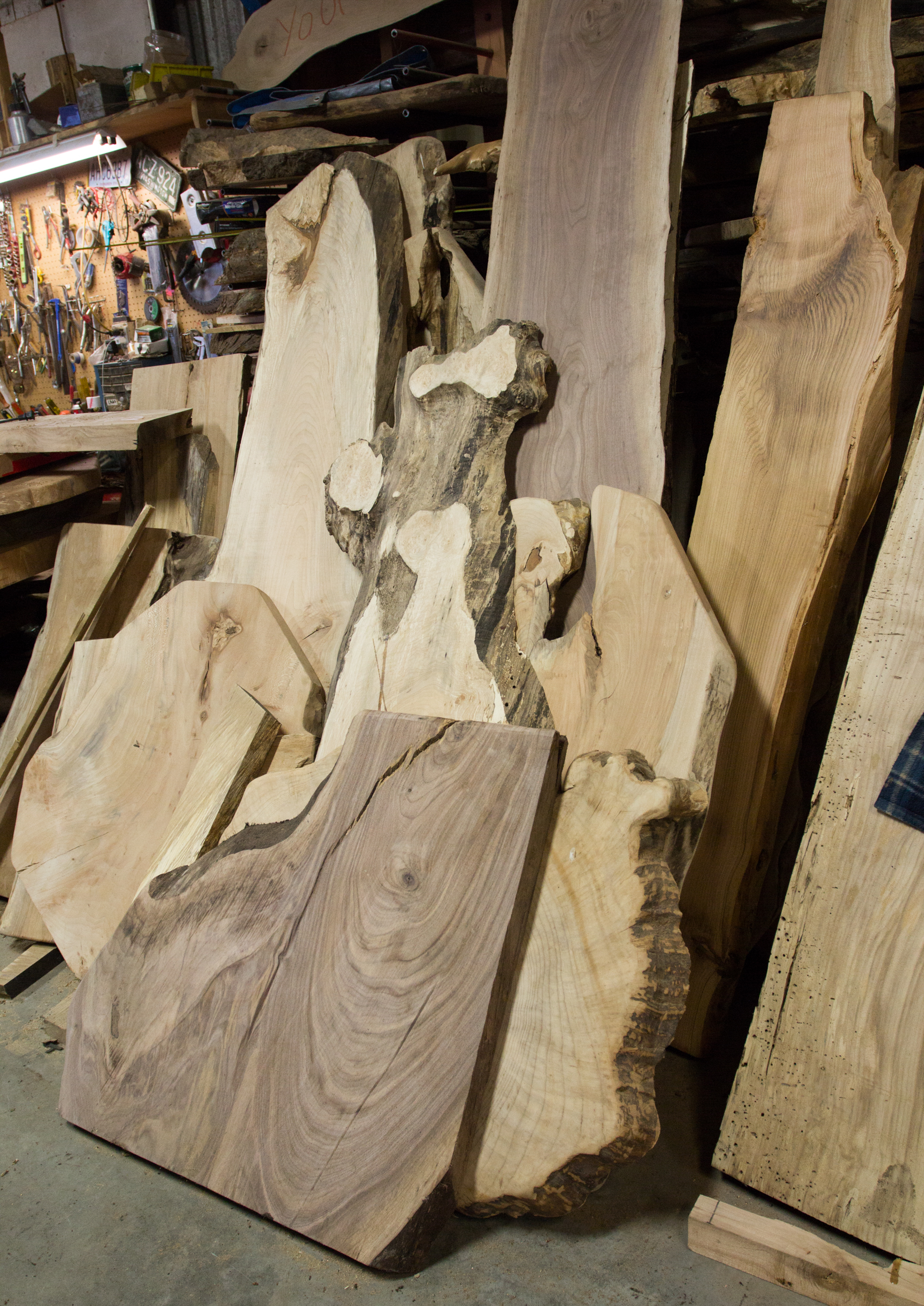 Bruce has slabs from diverse species of trees, including cedar, walnut, and even “monkey wood” (more commonly known as Chilean Pine).
Bruce has slabs from diverse species of trees, including cedar, walnut, and even “monkey wood” (more commonly known as Chilean Pine).
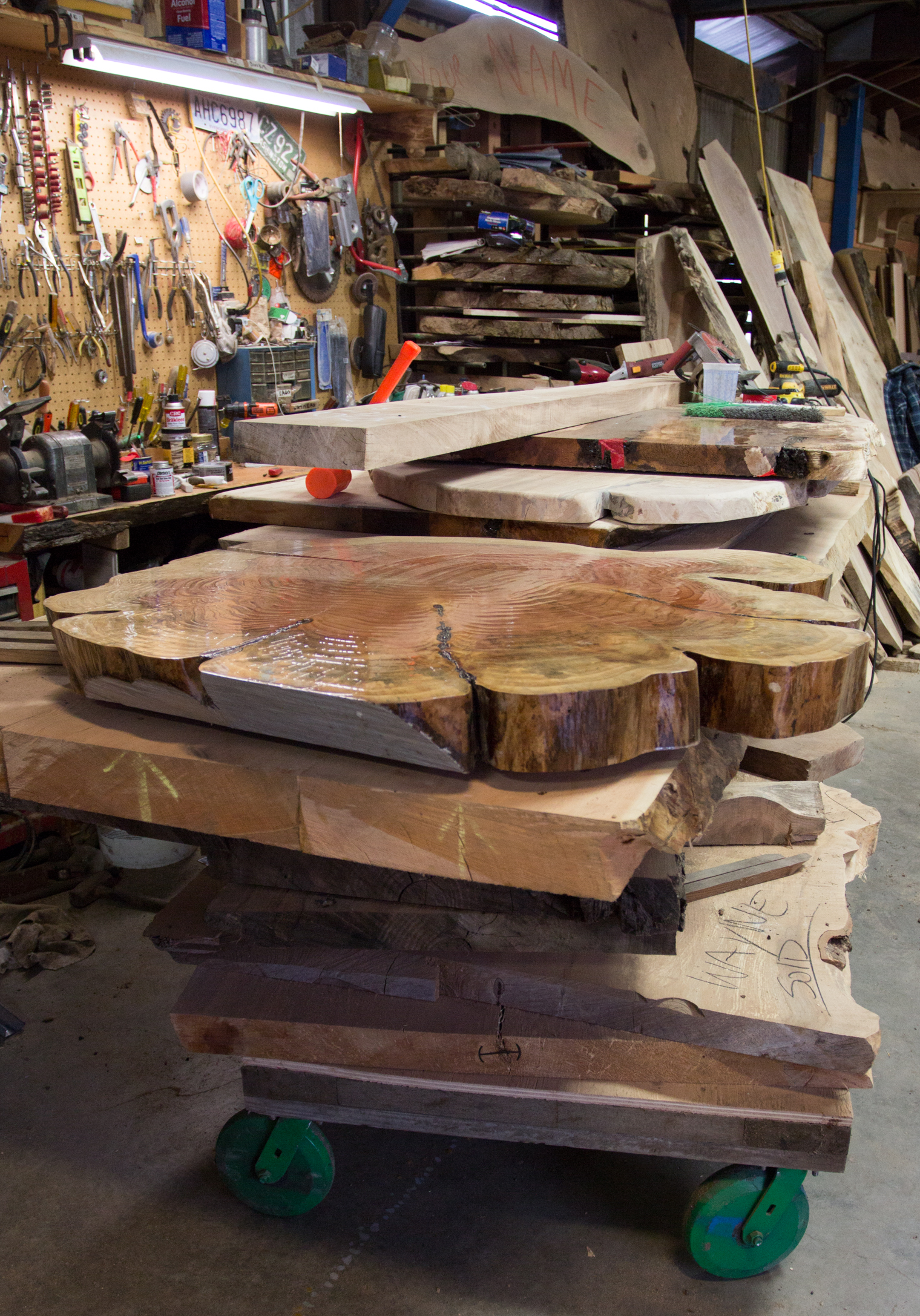 Bruce recommends only applying a clear cover to his slabs, since it will best showcase the natural stain of the wood.
Bruce recommends only applying a clear cover to his slabs, since it will best showcase the natural stain of the wood.
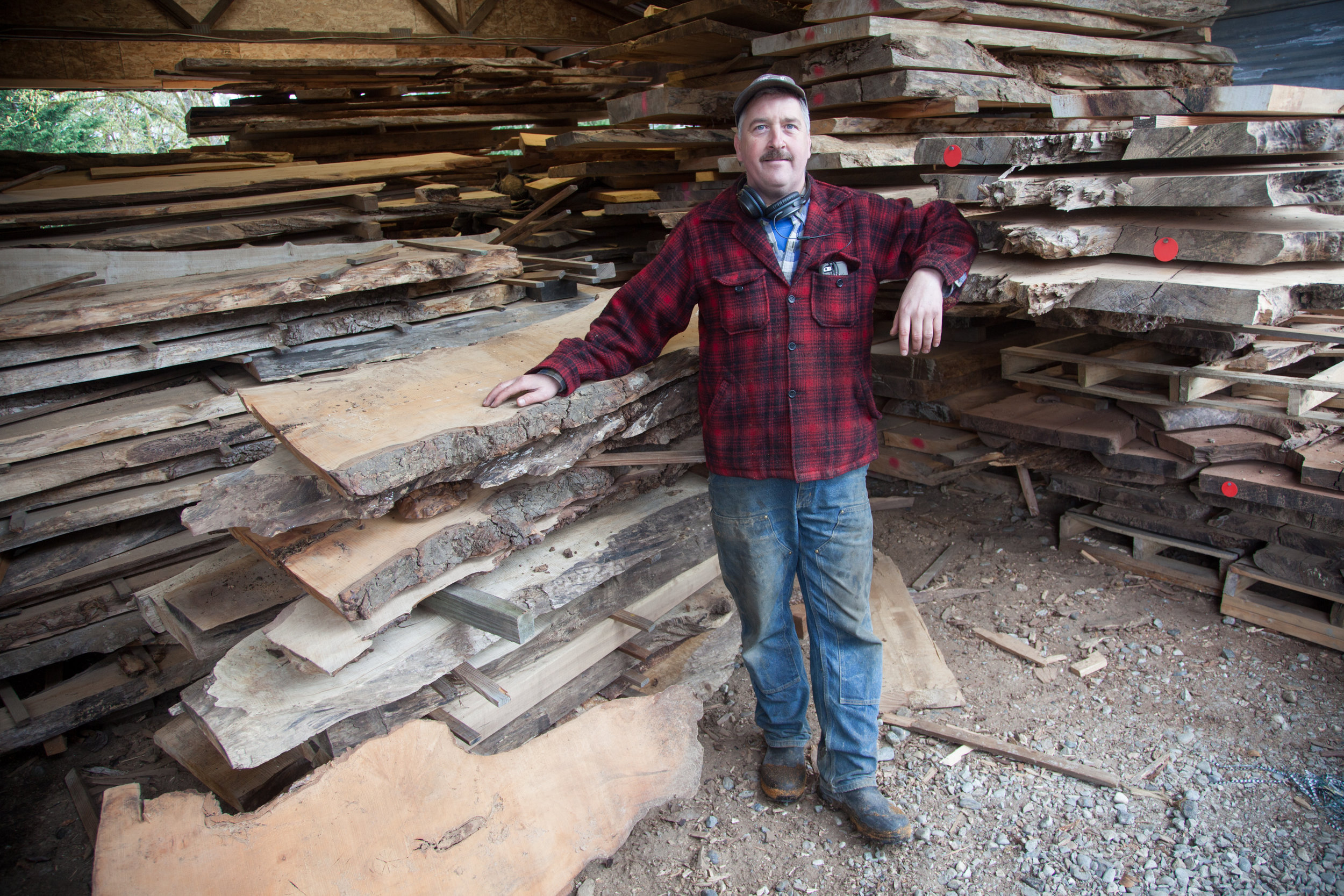
You can find details on Bruce’s mill, Wild Edge Woods, at http://wildedgewoods.com/.